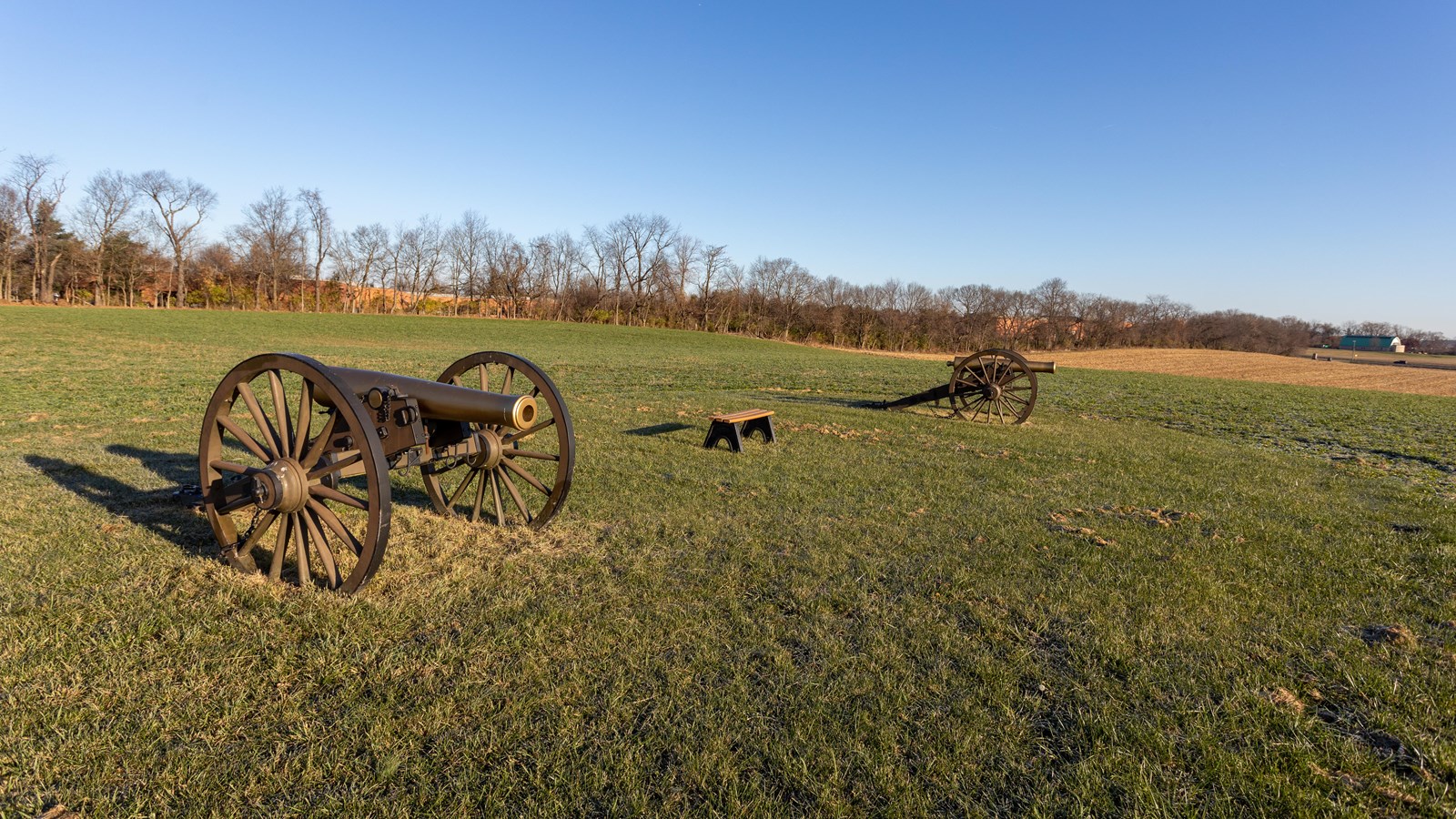Last updated: May 17, 2023
Place
Best Farm Confederate cannon 2

NPS / Claire Hassler
Audio Description, Cellular Signal, Historical/Interpretive Information/Exhibits, Parking - Auto, Scenic View/Photo Spot, Trailhead
These replica cannon represent the approximate location of Confederate artillery during the Battle of Monocacy. During the battle, Massie’s Battery and Carpenter’s Battery were located on the Best Farm west of the Georgetown Pike (modern Route 355 or Urbana Pike). Massie’s Battery’s original position was about a mile to the northwest of the junction or northwest of replica cannon in what is today an office park. Carpenter’s Battery was half a mile north of the junction, near the replicas.
Massie’s Battery was the first Confederate artillery to engage in the Battle of Monocacy. Around 7:30 a.m. two guns fired on Gambrill Mill, killing two soldiers of the 151st New York and wounding several men of the 87th Pennsylvania. Shortly thereafter the Kirkpatrick’s Battery, took position to the east of Georgetown Pike in the approximate location of the current position of the replica artillery in the field in front of the Visitor Center. This was followed by the arrival of the Carpenter’s Battery.
Between 10:30 a.m. and noon, Carpenter’s Battery was moved forward on the Best Farm just to the west of the Best Farm stone barn. The two guns of Massie's battery were moved forward to the area between the Best Farmhouse and the wooden barn (burned during the battle) located between the farmhouse and the road. This relocation was to support the assault of McCausland's Cavalry on the left of the Union line.
Unit Information
Captain John L. Massie commanded the Fluvanna Virginia Artillery during the Battle of Monocacy. This battery had one 3-inch ordnance rifle and three 12-pounder smooth bore Napoleons. Two of the guns were sent to guard Crum’s Ford and did not play an active role in the battle. This battery was formed in October 1862 by combining the 1st and 2nd Fluvanna artillery batteries. It was with Lt. General Jubal Early throughout the Shenandoah Campaign. Captain Massie was mortally wounded a few months later in September 1864 and Captain Charles G. Snead assumed command for the rest of the war. The unit was overrun and captured at the battle of Waynesboro, Virginia on March 2, 1865.
Captain John C. Carpenter commanded Alleghany Rough Artillery. This battery was armed with either; two 3- inch ordnance rifles and two 12-pounder smooth bore Napoleons (armament during Gettysburg battle); or two 10-pound Parrot rifles and one 12-pound Napoleon (armament in December 1864). This battery was originally an infantry company known as the Alleghany Toughs in the Stonewall Brigade. After the Battle of 1st Manassas, its senior officer was Lt. Joseph H. Carpenter whom General Jackson recognized as an artillery student of his at the Virginia Military Institute. On General Jackson's orders the unit was reorganized as artillery. It fought throughout the war until it was overrun with most members and all guns captured on April 1, 1865, at the battle of Five Forks.
- Duration:
- 6 minutes, 19 seconds
Fresh Confederate troops emerge out of Frederick, push Union troops back towards the River and take up positions in and around the Best Farm buildings, forcing General Lew Wallace to make a drastic decision.
